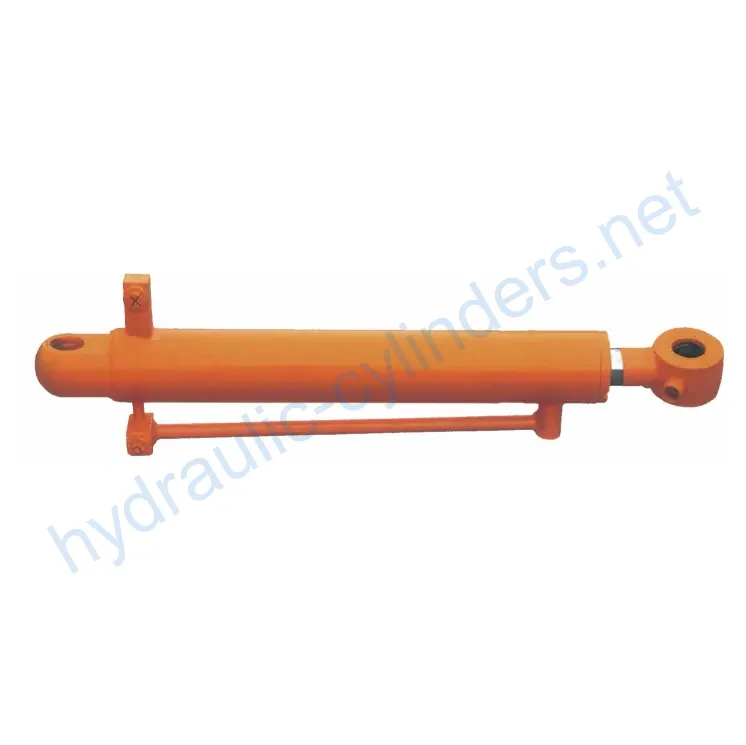Bucket Cylinder For Liebherr Large Excavator R944C
As one of the hydraulic cylinders manufacturers, suppliers, and exporters of mechanical products, We offer hydraulic cylinders and many other products.
Please get in touch with us for details.
Mail:sales@hydraulic-cylinders.net
Manufacturer supplier exporter of hydraulic cylinders.
Bucket Cylinder For Liebherr Large Excavator R944C
Introduction
The bucket cylinder for Liebherr large excavator R944C is a specially designed hydraulic cylinder used to control the movement of the bucket in heavy machinery such as excavators, backhoe loaders, and front-end loaders. It enables the bucket to perform lifting, lowering, and tilting actions, making it suitable for various material handling tasks. In the hydraulic system, the bucket cylinder utilizes the pressure change of hydraulic oil to achieve precise control of the bucket, allowing operators to efficiently handle heavy loads and adapt to complex working environments and diverse job requirements.

Features
- High Strength and Durability: Typically made of high-strength steel or aluminum, the bucket cylinder can withstand high pressure and heavy loads, adapting to harsh working conditions. Its design considers wear resistance and corrosion resistance to extend its lifespan.
- Efficient Hydraulic Operation: By utilizing the pressure of hydraulic oil, the bucket cylinder achieves smooth extension and retraction, allowing for quick response to control commands and providing powerful pushing and pulling forces for handling heavy loads and complex job tasks.
- Various Types: The bucket cylinder can be selected as single-acting (hydraulic pressure used in one direction only) or double-acting (hydraulic pressure used in both directions) cylinders according to specific operational needs. Some models are telescopic, allowing for greater extension without increasing external dimensions, making them suitable for applications with limited space.
- Perfect Replacement: Our products can perfectly replace the existing hydraulic cylinders.

Applications
The bucket cylinder finds applications in various types of equipment:
- Construction Equipment: Vital for excavators, which rely on bucket cylinders for digging, loading, and moving soil or debris. In backhoe loaders, bucket cylinders aid in both excavation and lifting.
- Agricultural Machinery: Used in front-end loaders for scooping, lifting, and transporting soil, hay, and other materials.
- Excavators: The bucket cylinder enables digging actions by allowing the bucket to penetrate the soil.
- Loaders: In front loaders, they assist in efficient lifting and dumping of goods.
Design Considerations and Selection Criteria
When it comes to the design considerations of the bucket cylinder, the following factors are crucial:
- Bearing Capacity: The cylinder must be designed to withstand the expected loads and forces it will encounter during operation.
- Sealing: Various seals, such as piston seals and rod seals, are used to ensure proper sealing and prevent leakage.
- Durability: The cylinder components, including the cylinder body and threaded ends, undergo fine treatment to enhance wear resistance.
- Safety: Safety features, such as pressure relief valves, are incorporated to prevent overpressure situations and ensure operator safety.
- Maintainability: The cylinder’s design should allow for easy maintenance and repair, with readily available replacement parts and rebuild services.

Sealing and Lubrication
The bucket cylinder utilizes various sealing components, such as piston seals and rod seals, which are made of wear-resistant materials like polyurethane and nitrile rubber. The cylinder body and threaded ends undergo fine treatment to enhance wear resistance. Regular lubrication with the appropriate amount of hydraulic oil is necessary to ensure smooth operation and maximize the lifespan of the cylinder.
Regular Inspection and Preventive Maintenance
Regular inspection and preventive maintenance are essential for ensuring the optimal performance of the bucket cylinder. The following measures should be taken:
- Inspect the cylinder for signs of wear, damage, or leakage.
- Properly lubricate the cylinder at recommended intervals.
- Replace seals when necessary.
- Perform calibration checks to ensure accurate operation.

Safety Considerations and Environmental Factors
When using the bucket cylinder, it is crucial to follow safety measures to prevent accidents and ensure operator well-being. Safety precautions should be taken into account when handling hydraulic systems to avoid potential hazards.
Troubleshooting and Common Issues
In the event of any issues with the bucket cylinder, the following troubleshooting tips and solutions can help diagnose and resolve problems:
- Familiarize yourself with the cylinder’s operation and maintenance manual.
- Check for common issues, such as leaks or reduced performance.
- Follow proper maintenance procedures to minimize potential problems.

Remember to organize the article logically, use subheadings for easy navigation, incorporate relevant images or charts to enhance understanding, and ensure that the content is clear, concise, and suitable for readers with different levels of technical knowledge. Finally, provide a comprehensive introduction to our company.

Author: lyl
Take a Tour of Our VR Factory:
Take a tour of our VR factory with the following
Hydraulic Cylinder Application:


